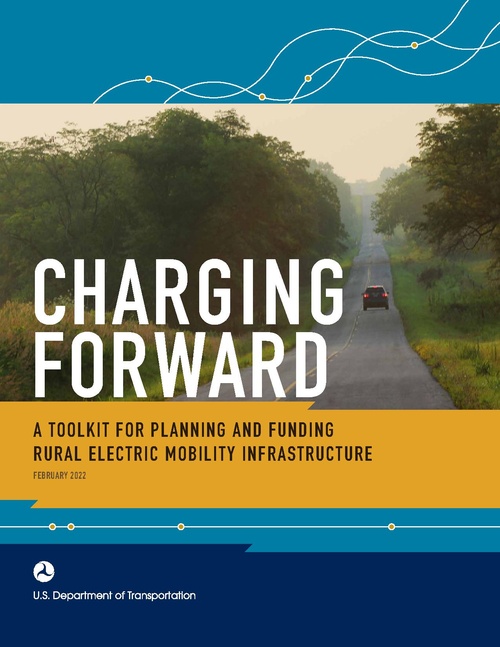Charging Forward
| News | |
| Image | 
|
|---|---|
| Published | 2022-02-09 |
| Point(s) of Contact | Maurice Henderson |
| Organization(s) | USDOT |
| Where | Washington DC |
| Display | Yes |

| |
The rapid growth in electric vehicles (EVs) today is part of a fundamental shift in transportation, a change that promises substantial benefits to individuals, businesses, communities, and the entire Nation. All Americans, regardless of where they live, should have the opportunity to benefit from the lower operating costs, reduced maintenance needs, and improved performance that EVs provide.
All communities—including communities of color, underserved communities, and environmental justice communities—should have access to the economic opportunities and improved air quality that EVs offer. The entire Nation will benefit from the successful nationwide adoption of EVs as one important element in the Federal Government’s strategy to eliminate climate-related emissions from transportation, alongside investments in quality transit, bicycle, and pedestrian networks that give Americans real choices in how to travel.
Rural parts of the country are home to 20 percent of Americans and almost 70 percent of America’s road miles.In rural parts of the country—home to 20 percent of Americans and almost 70 percent of America’s road miles—EVs can be an especially attractive alternative to conventional vehicles. Rural residents drive more than their urban counterparts, spend more on vehicle fuel and maintenance, and often have fewer alternatives to driving to meet their transportation needs. Over the long run, EVs will help residents of rural areas reduce those costs and minimize the environmental impact of transportation in their communities.
The Federal Government has set a goal to make half of all new vehicles sold in the U.S. in 2030 zero-emissions vehicles, and to build a convenient and equitable network of 500,000 chargers to help make EVs accessible to all Americans for both local and long-distance trips. On November 15, 2021, President Biden signed the Bipartisan Infrastructure Law, also referred to as the Infrastructure Investment and Jobs Act, which contains $7.5 billion in new funding for EV charging stations, makes EV charging infrastructure eligible for additional Federal funding programs, and provides funding for numerous other EV-related initiatives. This funding will benefit rural communities across the country by providing a ready source of capital for EV infrastructure projects.
Publicly accessible charging stations will play a key role in achieving a large-scale national transition to EVs. While most EV owners will primarily charge their vehicles at home and at work, many individuals and businesses will also depend on public charging. These include renters, residents of multifamily housing, and others who do not have access to their own chargers at home, as well as drivers on longer trips.
Increasing the availability of affordable public charging will help give rural Americans—and anyone who drives in rural America—the confidence that they will be able to recharge when and where they need to, just as reliably as they can refuel a conventional vehicle today.
A woman stands holding a baby while her electric vehicle recharges at the curbside.
While there is significant information available on how to plan and develop EV charging stations, these resources are spread across Federal agencies and do not specifically address the unique needs of rural Americans. Similarly, funding programs for EV infrastructure are distributed across numerous Federal and State agencies, making it difficult for rural stakeholders to determine which programs they are eligible for.
This toolkit is meant to be a one-stop resource to help rural communities scope, plan, and fund EV charging infrastructure. A rural stakeholder—such as an individual property owner, business, town, or planning agency—can use the toolkit to identify key partners for a project, take advantage of relevant planning tools, and identify available funding or financing to help make that project a reality.
Armed with the resources in this toolkit, rural communities will have the tools and information they need to start planning and implementing EV infrastructure projects and ultimately realize the benefits of electric mobility.
This toolkit is intended for a variety of rural stakeholders, including States, local communities, Tribes, transportation providers, nonprofits, businesses, and individuals.
The toolkit focuses on infrastructure for light-duty electric passenger vehicles (such as sedans, sport utility vehicles, and pickup trucks), but also addresses funding opportunities and planning considerations for other types of electric vehicles, including transit and school buses, medium- and heavy-duty vehicles, and agricultural equipment such as tractors.
Users can browse the web version of the toolkit using the left-navigational menu and in-text links or view a PDF version of the toolkit.
